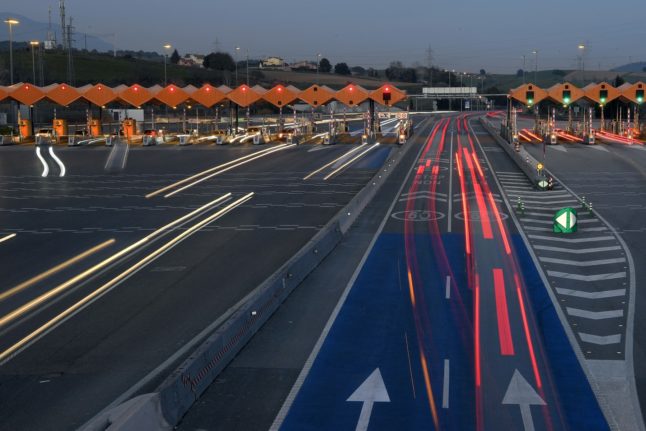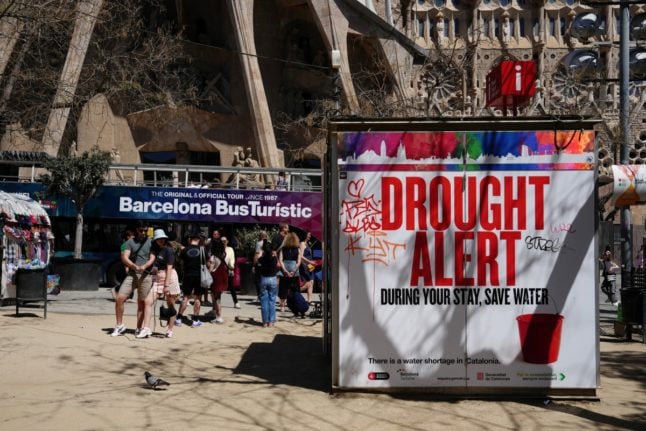The second part of Spain’s operación salida kicks off on Wednesday afternoon, with Spain’s Dirección General de Tráfico (DGT) warning of heavy traffic on motorways and upwards of 10 million journeys made over the Easter period.
Since the first phase of operación salida, which began last Friday 22nd and lasted until midnight on Monday 25th, 13 people sadly lost their lives in traffic accidents, according to traffic data.
The second phase is one of Spain’s busiest travel periods of the year, and officially begins on the afternoon of Wednesday 27th March and will last until midnight on Monday April 1st, as it will be a holiday in several regions including the Balearic Islands, Cantabria, Catalonia, the Basque Country, La Rioja, Valencia, and Navarre.
READ ALSO:
- What’s open and what’s closed over Easter in Spain?
- Strike action at Spanish airports set to disrupt Easter travel
The main traffic flow will be from big cities to coastal areas, mountain tourist areas, second homes, and towns and cities with traditional Semana Santa processions.
Operación salida is the name Spaniards give to the ‘great exodus’ that occurs every summer, Christmas and Easter break as millions head to the coast or return home to see family over the holidays.
DGT travel advice
The DGT has made several travel recommendations during the Easter period, which you can find a full breakdown of on the website here.
READ ALSO: Semana Santa: What will the weather be like in Spain this Easter?
Wednesday 27th: Above average traffic expected in all regions of Spain in the afternoon as people set off, except in Catalonia and Valencia, where Maundy Thursday is not a public holiday.
Thursday 28th (Maundy Thursday): More traffic than usual expected at motorway exits of large towns and cities. In the evening, operación salida will also kick off in Catalonia and Valencia as people finish work, so heavy traffic is expected especially on access roads to the coast and tourist areas between 1pm-10pm.
Friday 29th (Good Friday): an increase in outbound travel will continue in all regions of Spain, notably day trips to areas close to big cities and places where Semana Santa processions are held.
Saturday 30th (Holy Saturday): The DGT expects Saturday to be the calmest travel day of the Easter break in terms of traffic, mostly because the majority of people will have already made their journeys.
Sunday 31st (Easter Sunday): Return journeys will begin in all regions of Spain except those where Monday is a public holiday: the Balearic Islands, Cantabria, Catalonia, Basque Country, La Rioja, Valencia and Navarre. Traffic will likely be especially heavy around cities.
Monday April 1st (Easter Monday): In the afternoon and evening return trips to the regions where it is a public holiday will begin, which may cause traffic problems on major motorways as well as on the access roads of bordering provinces. Return trips are also expected around the rest of Spain since school and university classes do not start until Tuesday.
Busiest motorways
According to the DGT, the motorways that will see the heaviest traffic will be at entrances and exits of large cities such as Madrid, specifically on the AP-6, A-1, A-2, A-3. A-4. A-5. A-6 and M-40.
Likewise, in Andalusia there could be heavy traffic on the AP-4, Ap-7, A-4, A-7, A-44, A-45, A-49, A-66, A-92, A-92M and MA-20.
Aragón: AP-2, the AP-68, A-2 and A-23/N-330.
Asturias: AP-66, A-88, A-64, A-66 and N-634.
Cantabria: A-8, A-67, S-10 and S-30.
Castilla La Mancha: AP-36, A-2. A-3. A-4, A-5. A-30, A-31, A-40, A-41 and A-42.
Castilla y León: AP-1. AP-6, A-1. A-6, A-52. A-62, A-66, A-67 and N-630.
Extremadura: A-5 and A-66.
Murcia: AP-7, A-7 and A-30.
Navarra: AP-15, AP-68, A-1. A-10, A-12. A-15, A-21, A-68, N-121 and N-121-A.
Basque Country: AP-8, the Ap-68, the A-1/N-I, A-8.
La Rioja: Ap-68, the N-111, N-232.
Galicia: AP-9, A-6, A-8, A-52, A-55 and N-550.
Balearic Islands: Ma-1, Ma-13, Ma-19 and Ma-20.




 Please whitelist us to continue reading.
Please whitelist us to continue reading.
Member comments